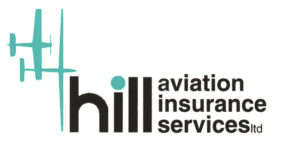Reporting A Safety Occurrence
When an accident occurs, the priorities are of course to save life and to prevent the situation worsening.
‘Safety occurrence’ is is a term used to embrace all events which have, or could have significance regarding flight safety.
The purpose of safety occurrence reporting is to allow the community to learn from events and reduce the probability of re-occurrence. The BGA’s approach to open and free reporting near accidents, incidents, accidents and other unsafe situations embraces Just Culture principles. The aim of a Just Culture is to promote continuous learning from previous mistakes and to encourage pilots to openly and freely share essential safety related information.
This webpage details how to report:
– Incidents and accidents
– Airworthiness and maintenance occurrences
– Airprox
– Winch overflights
– Infringements of controlled or restricted airspace
Incident and accident reporting
Reporting Requirements – AAIB (Air Accidents Investigation Branch)
The following accidents must be immediately reported by telephone to the AAIB (01252 512299) and AAIB permission must be obtained before the aircraft is moved, except for the purposes of rescue:
All accidents in the UK involving gliders, self-launching gliders, microlight gliders, TMGs and tugs, resulting in fatal or serious injury and/or substantial aircraft damage, where the accident is associated with the operation of an aircraft from embarkation with the intention of flight, to disembarkation.
This definition of an accident means that accidents resulting from, for example, falling winch cables, runaway tractors, and towing gliders behind a vehicle should not be reported to the AAIB even if they are very serious. Nor do the AAIB have to be informed about any accidents resulting in minor injury and/or minor damage.
Reporting Requirements – Police
All accidents involving fatal or serious injury must be immediately reported to the local police.
Reporting Requirements – BGA
All accidents and incidents involving gliders, self-launching gliders, microlight gliders, TMGs and tugs normally based at a BGA club or resulting from the flying operations of BGA gliding clubs, including those foreign registered, must be reported to the BGA. This includes accidents also reported to the AAIB.
‘All accidents and incidents’ includes accidents anywhere in the world resulting in personal injury, and/or damage to gliders, self-launching gliders, microlight gliders, TMGs, tugs, other aircraft, and 3rd party property. Excluded are injury or damage unconnected with gliding operations, for example a fall in the clubhouse or injury in a workshop. These situations are the domain of the Health and Safety Executive.
An immediate report must be made to the BGA office by email or telephone, and followed asap by a BGA incident and accident report form containing as much information as possible and submit to the BGA Office, ideally by email. The BGA will submit any mandatory occurrence reporting information that may be required – there is no need for the reporter to do so.
Please use the electronic form which is an expandable Word document. The manual version should only be used if you have no access to a computer.
BGA Accident and Incident Report Form
Club Officials
As soon as possible, inform the club chairman, CFI, and safety officer about any serious accident.
Club-level incident reporting
Occurrences that don’t meet the criteria detailed above as required reporting are still of interest. Awareness and understanding of incidents that occur without damage or injury can also help identify action that may be needed to prevent a re-occurrence as something more serious. Therefore, most clubs have a club level incident reporting system that captures details about these incidents and allows the club and its pilots, usually via the Club Safety Officer, to become aware of any trends or issues that need to be addressed.
Airworthiness or Maintenance Occurrence Reporting
Where an owner or inspector identifies an airworthiness or maintenance related occurrence or significant hazard, the owner or inspector should supply the following details on a BGA incident and accident report form and submit the form to the BGA Office, ideally by email.
- Glider Type and Registration
- Name and contact details of the person reporting
- Details of the airworthiness or maintenance occurrence
Please note that to comply with the terms of the BGA’s Part M subpart F&G approvals, the following airworthiness related occurrences must be reported to the BGA;
Sailplanes and aeroplanes; Abnormal severe vibration (for example: aileron or elevator ‘flutter’, or of propeller), any flight control not functioning correctly or disconnected, a failure or substantial deterioration of the aircraft structure, a loss of any part of the aircraft structure or installation in flight.
Aeroplanes; A failure of an engine, rotor, propeller, fuel system or other essential system, leakage of any fluid which resulted in a fire hazard or possible hazardous contamination of aircraft structure, systems or equipment, or risk to occupant
The form will be processed by the BGA Office and details will be passed to the Chief Technical Officer. The BGA will submit any mandatory occurrence reporting information that may be required – there is no need for the reporter to do so. The BGA CTO may suggest additional reporting.
BGA Accident and Incident Report Form
What does the BGA do with the Information?
The BGA ‘Post accident and incident reporting process’ describes how the BGA processes information received, including to update the MOR reporting portal.
All personal data submitted on a reporting form is protected on receipt by the BGA. Please refer to our privacy notice.
Airprox Reporting
Full details of what constitutes an airprox and how to report an airprox are available here.
Winch Overflight Reporting
Reporting an overflight of a winch site, including if it did not result in an Airprox
Please follow this BGA guidance. Please use common sense re the level of detail needed on the reporting form. The important thing is that the BGA gets a record of what happened, where and when.
Infringement of Controlled or Restricted Airspace Reporting
If a pilot knows they have infringed, the infringements should be reported by the pilot involved. Good practice includes contacting the relevant air traffic service provider as soon as practical to explain what occurred. It is up to each air traffic service provider to first internally review every infringement before reporting it to CAA as an MOR if the circumstances dictate it.
The pilot can submit a report on the Airspace & Safety Initiative (ASI) website here. As the form is anonymous, pilots are encouraged to additionally email the CAA at MOR-Responses@caa.co.uk to provide their name address quoting the date and time of the occurrence; this will enable the CAA to contact the pilot and resolve the issue in an expedient manner. Under “Just Culture”, any CAA investigation is not looking to apportion blame for an incident – it is seeking to establish the facts to fully-understand why the incident occurred and what remedial training/education actions can be taken to prevent a repeat. The best way a pilot who has infringed can help is to engage with the CAA and be open and honest.
Information that can help to avoid infringements is provide here.
BGA Office Contact Details
0116 2892956
Office@gliding.co.uk
8 Merus Court, Leicester, LE19 1RJ

